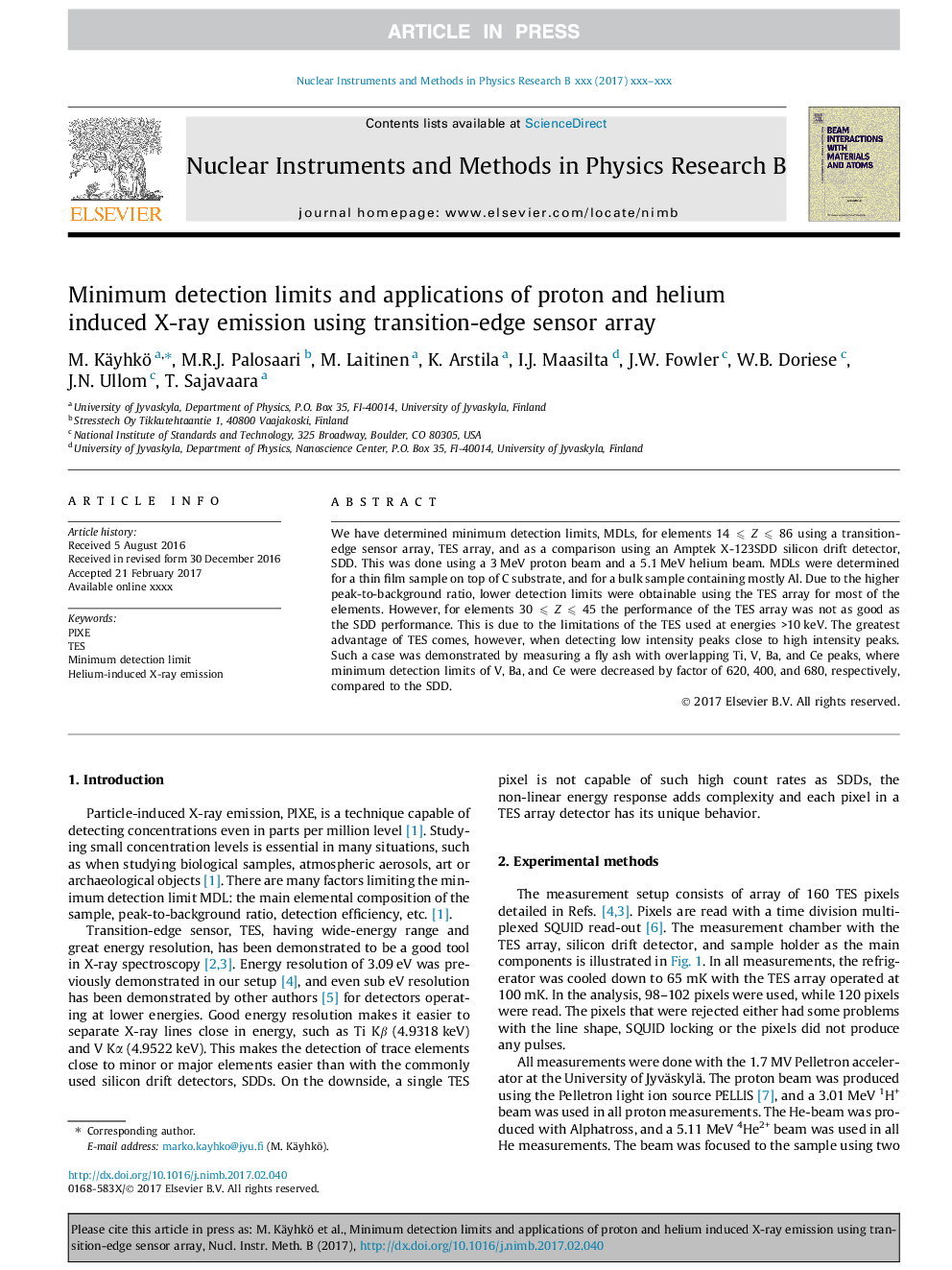| Article ID | Journal | Published Year | Pages | File Type |
|---|---|---|---|---|
| 5467446 | Nuclear Instruments and Methods in Physics Research Section B: Beam Interactions with Materials and Atoms | 2017 | 5 Pages |
Abstract
We have determined minimum detection limits, MDLs, for elements 14⩽Z⩽86 using a transition-edge sensor array, TES array, and as a comparison using an Amptek X-123SDD silicon drift detector, SDD. This was done using a 3 MeV proton beam and a 5.1 MeV helium beam. MDLs were determined for a thin film sample on top of C substrate, and for a bulk sample containing mostly Al. Due to the higher peak-to-background ratio, lower detection limits were obtainable using the TES array for most of the elements. However, for elements 30⩽Z⩽45 the performance of the TES array was not as good as the SDD performance. This is due to the limitations of the TES used at energies >10 keV. The greatest advantage of TES comes, however, when detecting low intensity peaks close to high intensity peaks. Such a case was demonstrated by measuring a fly ash with overlapping Ti, V, Ba, and Ce peaks, where minimum detection limits of V, Ba, and Ce were decreased by factor of 620, 400, and 680, respectively, compared to the SDD.
Keywords
Related Topics
Physical Sciences and Engineering
Materials Science
Surfaces, Coatings and Films
Authors
M. Käyhkö, M.R.J. Palosaari, M. Laitinen, K. Arstila, I.J. Maasilta, J.W. Fowler, W.B. Doriese, J.N. Ullom, T. Sajavaara,
